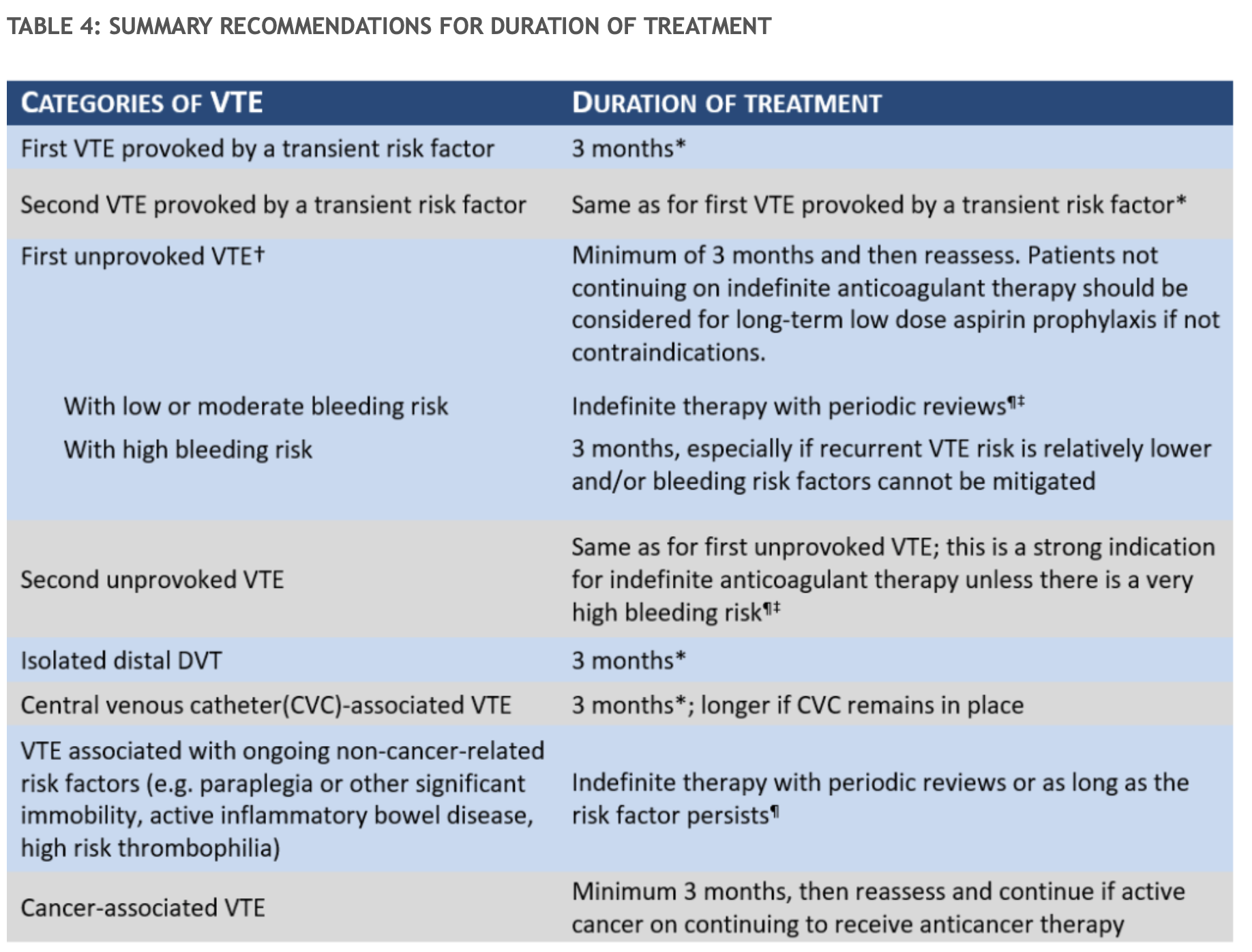Day 5- Pulmonary Embolism
Investigations:
ECG (sinus tachycardia > S1Q3T3> right axis deviation >RBBB
CXR (Focal oligaemia, wedge density)
ABG (redacted PaO2, metabolic acidosis, respiratory alkalosis)
D-dimer (high sensitivity, used to rule out)
CTPA (often used over VQ scan in the non-pregnant patient)
Doppler U/S (can be done to assess baseline clot burden in non acute setting)
Non-Massive PE:
Hemodynamically stable
ABC’s, O2 sat >92%
Anticoagulation
Blood and Clots: Which antithrombotic therapy should I start for my patient with acute VTE?
Thrombosis Canada (link)
LMWH if kidney function allows
Dalteparin 200IU/kg subcut daily
Enoxaparin 1mg/kg BID
Tinzaparin 175 IU/kg once daily
OR IV unfractionated heparin
OR
DOAC
Apixiban 10mg PO BID x 7 days then 5mg PO BID
Rivaroxaban 15mg PO BID x 21 days then 20mg PO daily
Dabigatran 150mg PO BI D (after initial 5-10 days of therapeutic LMWH)
Edoxaban 60mg PO daily (after 5-10 days of therapeutic LMWH)
FAQ:
Should I be screening my patients with unprovoked VTE extensively for occult cancer? (Blood and Clots)
Based on the SOME study (n=854), comparing patients with first unprovoked VTE to extensive screening versus limited screening, there was no difference in the number of missed occult cancer diagnoses at 1 year
Should I test for heritable thrombophilia in patient with acute VTE? (CMAJ 5 things)
This is not generally advised. Testing can be costly, and of low value to the health care system
Patients should not be tested acutely as protein C, protein S and antithrombin levels are often low during acute VTE and in the presence of anticoagulants
The presence of heritable thrombophilia does not add independent predictive value to estimates of recurrence of VTE and therefore should not affect treatment duration (other factors such as male gender, persistently elevated D-dimer, or current active cancer confer higher risk of recurrence and are more important when deciding treatment duration)
What if my patient is Pregnant?
Only LMWH is approved in pregnancy. Treatment length is either at least 3 months, or throughout the rest of pregnancy to 6 weeks postpartum.
What if my patient has a malignancy?
Evidence now supports DOACs for treatment of VTE in malignancy. Patients with luminal GI malignancy may be at higher risk of bleeding when compared to LMWH, and therefore DOACs should be used cautiously in this subset of patients.



